MEA Biofertilizer Market Size
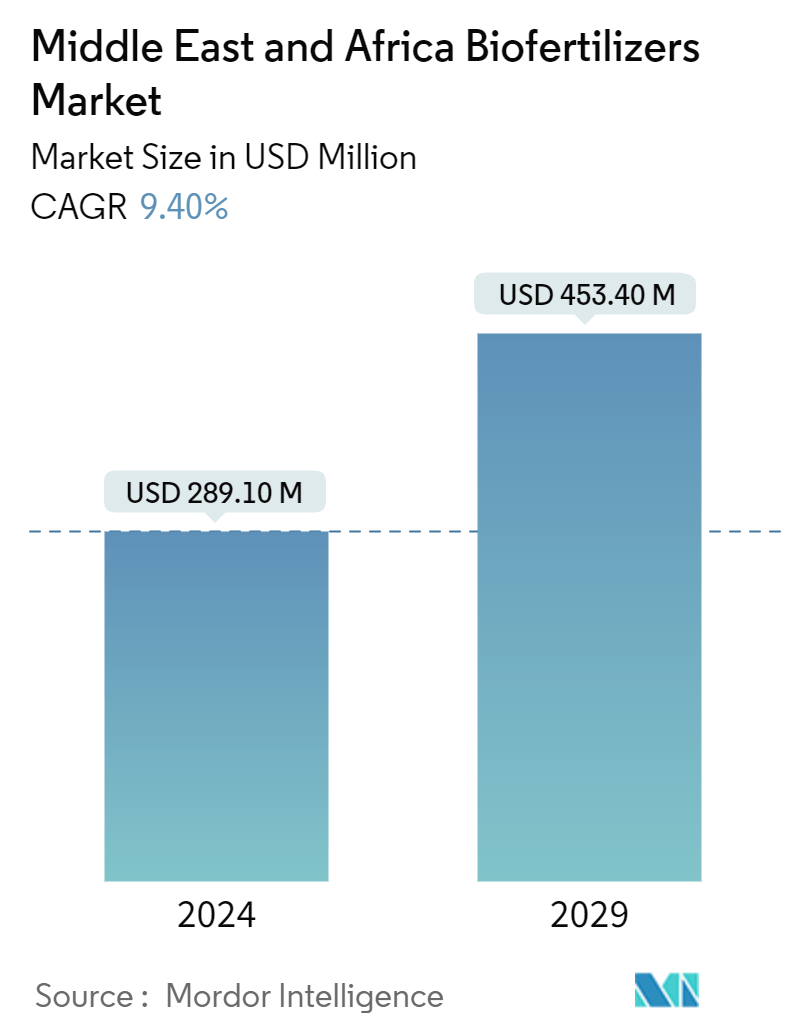
| Study Period | 2019 - 2029 |
| Base Year For Estimation | 2023 |
| Market Size (2024) | USD 289.10 Million |
| Market Size (2029) | USD 453.40 Million |
| CAGR (2024 - 2029) | 9.40 % |
| Market Concentration | High |
Major Players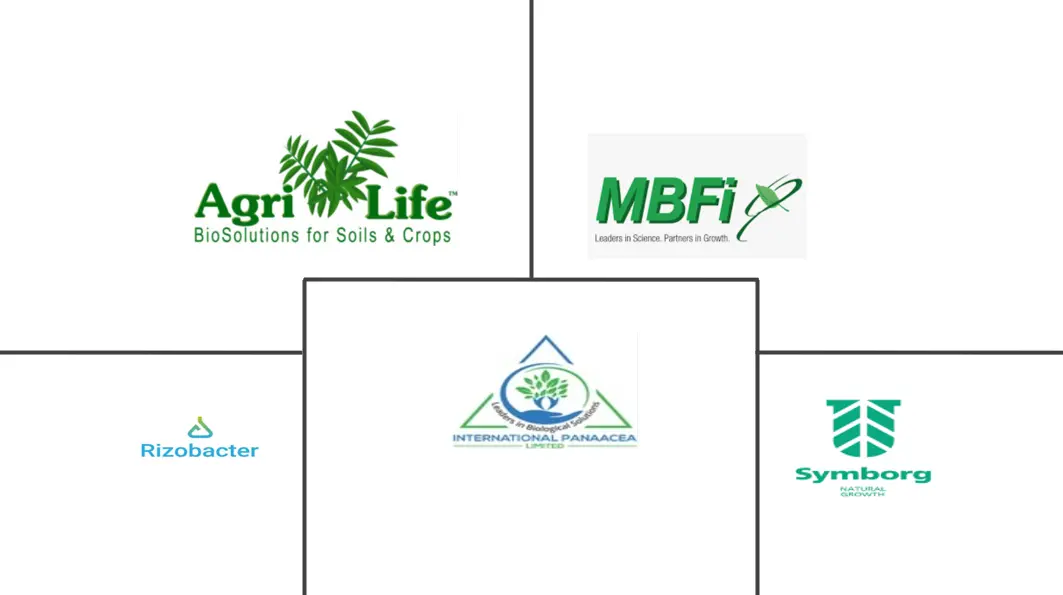
*Disclaimer: Major Players sorted in no particular order |
MEA Biofertilizer Market Analysis
The Middle East & Africa Biofertilizers Market size is estimated at USD 289.10 million in 2024, and is expected to reach USD 453.40 million by 2029, growing at a CAGR of 9.40% during the forecast period (2024-2029).
- The favorable government policies supporting the institutionalization of biofertilizers along with stipulated guidelines for its registration and distribution increased food demand for sustainable agriculture is driving the growth of the market. Lack of adoption of biofertilizers due to lack of awareness and dependency on imports of crops is restraining the middle east and Africa biofertilizers market.
- Carrier-based biofertilizers are occupying a major share in 2019 among other technologies. The higher prices of liquid biofertilizers as compared to carrier-based biofertilizers have led to the increased popularity of the latter among the regional farmers. Thus, the latter is driving the market revenue for the biofertilizers market.
MEA Biofertilizer Market Trends
Increased Food Demand and Need for Sustainable Agricultural Development
Africa has the highest population with the largest arable land. For instance, the Sub-Sahara Africa region has 13% of the world population and has approximately 20% of global agricultural land. However, the region is facing severe food insecurity which is primarily attributed to inadequate food production. The lack of access to mechanization in farming and limited use of fertilizers due to less farmer buying power is driving the demand for alternative cost-effective fertilizers such as bio-fertilizers in the region. Smallholder farms in sub-Saharan Africa accounts for around 33 million, representing 80% of all farms in the region. Low fertility and inefficient management of soils have been major productivity challenges among African smallholder farmers. This can be somehow mitigated by the usage of inorganic fertilizers but their usage in soil nutrient management is unsustainable, causing soil degradation and environmental pollution. Currently, the increase in demand for sustainable agriculture is driving farmers to adopt a cost-effective integrated nutrient management system. This, in turn, may lead to demand for biofertilizers in the region.
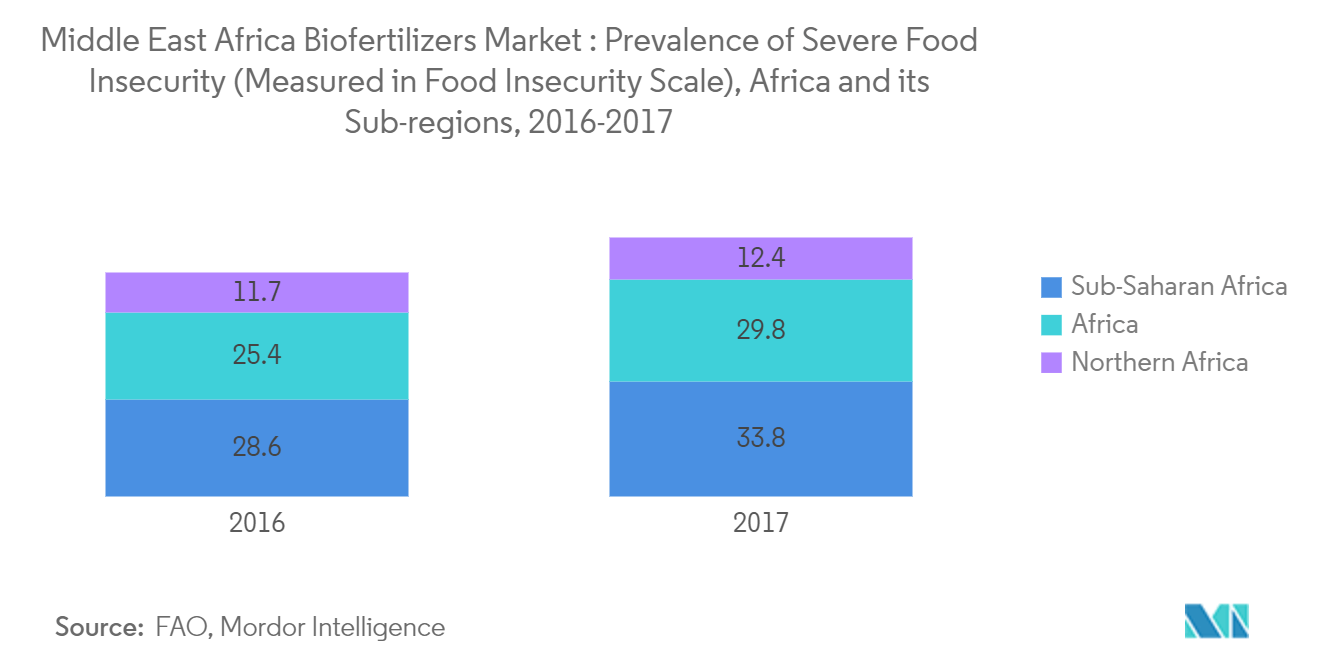
Grains and Cereals Holds a Prominent Share
Africa is the origin of major cereal crops that include pearl, sorghum, millet, and rice Another major cereal wheat is widely cultivated in Sudan and Ethiopia. Maize has overtaken these traditional cereals over the last few years. For instance, 'Rhizofos maize' and 'Rhizopus Wheat and Barley' products from Rhizobacter are extensively used in South Africa increased maize yield by 15.3% and in the greenhouse by 18.4% compared to synthetic fertilizers, thus increasing yield per hectare will boost the biofertilizer market during the forecast period. In Africa, Tanzanian and Kenyan small farmers produce 69% and 63% of the food in the country, respectively. The economic condition of most sub-Saharan African countries cannot support the development of commercial agriculture and the use of expensive farm inputs such as inorganic fertilizers which damage the African soil. Therefore low-cost fertilizers such as biofertilizers will drive the market in the African region, as the region comprises small and marginal farmers in large share.
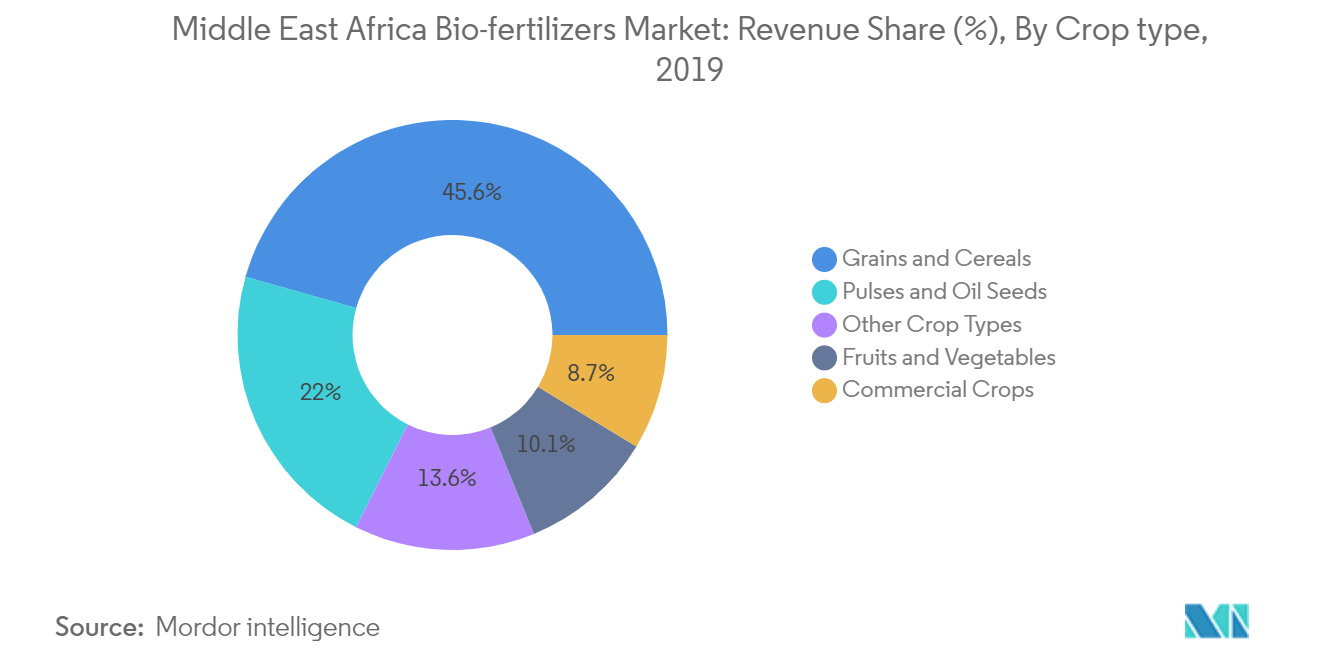
MEA Biofertilizer Industry Overview
The market studied is highly fragmented with the presence of many domestic and international players in the market. Rizobacter Argentina, Agrilife, International Panacea and Symborg are some of the prominent players who have their presence in this region. These players are coming up with custom-tailored products that cater to the need of farmers in this region.
MEA Biofertilizer Market Leaders
-
Microbial Biological Fertilizers International (MBFI)
-
Mapleton Agri Biotec Pty Ltd
-
International Panaacea Ltd
-
Rizobacter
-
Symborg
*Disclaimer: Major Players sorted in no particular order
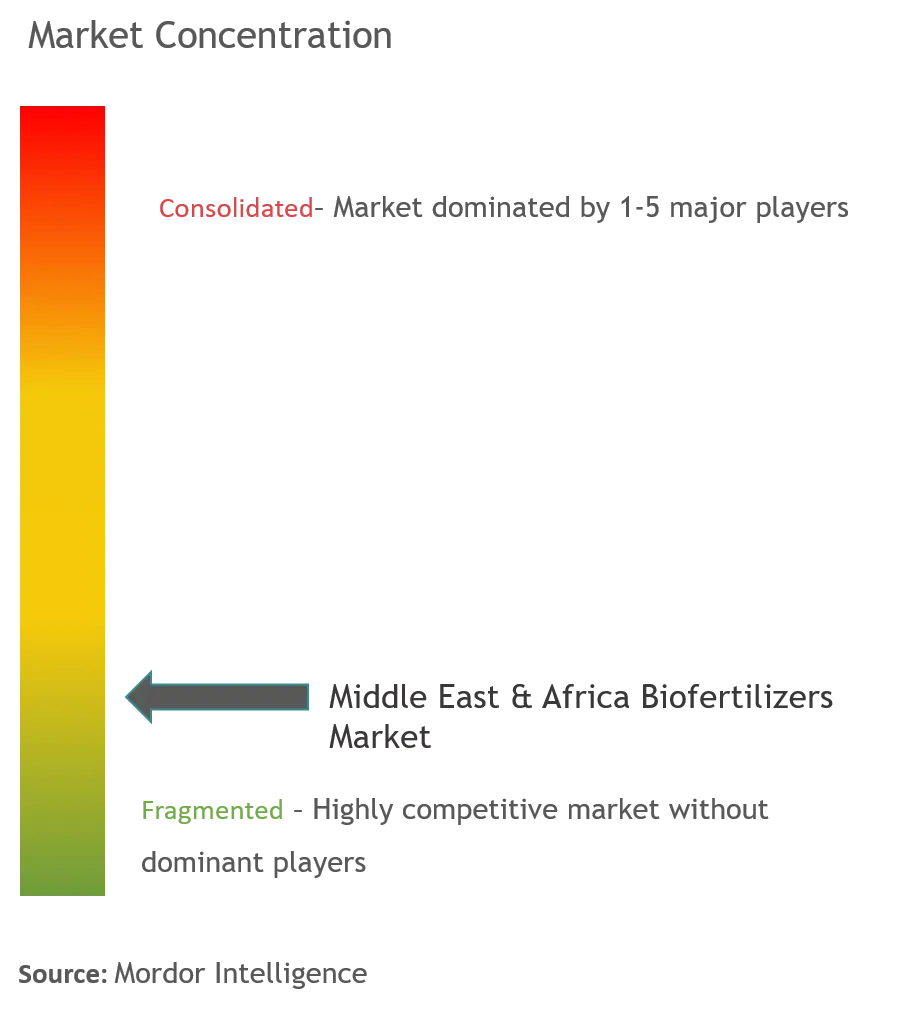
MEA Biofertilizer Market News
In January 2021, Rizobacterand Heliae Agriculture collaborated to develop Innovative Soil and Crop Nutrition Technologies that will help the company manufacture better and more efficient solutions, enhancing its product portfolio.
MEA Biofertilizer Market Report - Table of Contents
1. INTRODUCTION
- 1.1 Study Deliverables
- 1.2 Study Assumptions
- 1.3 Scope of the Study
2. RESEARCH METHODOLOGY
3. EXECUTIVE SUMMARY
4. MARKET DYNAMICS
- 4.1 Market Overview
- 4.2 Market Drivers
- 4.3 Market Restraints
-
4.4 Porter's Five Forces Analysis
- 4.4.1 Threat of New Entrants
- 4.4.2 Bargaining Power of Buyers/Consumers
- 4.4.3 Bargaining Power of Suppliers
- 4.4.4 Threat of Substitute Products
- 4.4.5 Intensity of Competitive Rivalry
5. MARKET SEGMENTATION
-
5.1 Microorganism Type
- 5.1.1 Rhizobium
- 5.1.2 Aztobacter
- 5.1.3 Azospirillum
- 5.1.4 Phosphate Solubilizing Bacteria
- 5.1.5 Mycorrhiza
- 5.1.6 Other Microorganisms
-
5.2 Crop type
- 5.2.1 Row Crops
- 5.2.2 Horticultural Crops
- 5.2.3 Row Crops
-
5.3 Geography
- 5.3.1 Africa
- 5.3.1.1 South Africa
- 5.3.1.2 Kenya
- 5.3.1.3 Uganda
- 5.3.1.4 Tanzania
- 5.3.1.5 Nigeria
- 5.3.1.6 Rest of Africa
- 5.3.2 Middle East
- 5.3.2.1 United Arab Emirates
- 5.3.2.2 Saudi Arabia
- 5.3.2.3 Turkey
- 5.3.2.4 Egypt
- 5.3.2.5 Qatar
- 5.3.2.6 Rest of Middle East
6. COMPETITIVE LANDSCAPE
- 6.1 Most Adopted Strategies
- 6.2 Market Share Analysis
-
6.3 Company Profiles
- 6.3.1 Agrilife
- 6.3.2 Rizobacter
- 6.3.3 International panaacea ltd
- 6.3.4 Microbial Biological Fertilizers International (MBFI)
- 6.3.5 Mapelton Agri Biotec PTY ltd
- 6.3.6 Symborg
- *List Not Exhaustive
7. MARKET OPPORTUNITIES & FUTURE TRENDS
** Subject To AvailablityMEA Biofertilizer Industry Segmentation
For the purpose of this report, biofertilizers have been considered within the scope of the research on plant nutrition. The market under study includes biofertilizers applied by owners or operators and commercial applicators to farms and facilities that are involved in the production of agricultural commodities.
| Microorganism Type | Rhizobium | |
| Aztobacter | ||
| Azospirillum | ||
| Phosphate Solubilizing Bacteria | ||
| Mycorrhiza | ||
| Other Microorganisms | ||
| Crop type | Row Crops | |
| Horticultural Crops | ||
| Row Crops | ||
| Geography | Africa | South Africa |
| Kenya | ||
| Uganda | ||
| Tanzania | ||
| Nigeria | ||
| Rest of Africa | ||
| Geography | Middle East | United Arab Emirates |
| Saudi Arabia | ||
| Turkey | ||
| Egypt | ||
| Qatar | ||
| Rest of Middle East |
MEA Biofertilizer Market Research FAQs
How big is the Middle East & Africa Biofertilizers Market?
The Middle East & Africa Biofertilizers Market size is expected to reach USD 289.10 million in 2024 and grow at a CAGR of 9.40% to reach USD 453.40 million by 2029.
What is the current Middle East & Africa Biofertilizers Market size?
In 2024, the Middle East & Africa Biofertilizers Market size is expected to reach USD 289.10 million.
Who are the key players in Middle East & Africa Biofertilizers Market?
Microbial Biological Fertilizers International (MBFI), Mapleton Agri Biotec Pty Ltd, International Panaacea Ltd, Rizobacter and Symborg are the major companies operating in the Middle East & Africa Biofertilizers Market.
What years does this Middle East & Africa Biofertilizers Market cover, and what was the market size in 2023?
In 2023, the Middle East & Africa Biofertilizers Market size was estimated at USD 261.92 million. The report covers the Middle East & Africa Biofertilizers Market historical market size for years: 2019, 2020, 2021, 2022 and 2023. The report also forecasts the Middle East & Africa Biofertilizers Market size for years: 2024, 2025, 2026, 2027, 2028 and 2029.
MEA Biofertilizers Industry Report
Statistics for the 2024 MEA Biofertilizers market share, size and revenue growth rate, created by Mordor Intelligence™ Industry Reports. MEA Biofertilizers analysis includes a market forecast outlook 2029 and historical overview. Get a sample of this industry analysis as a free report PDF download.



